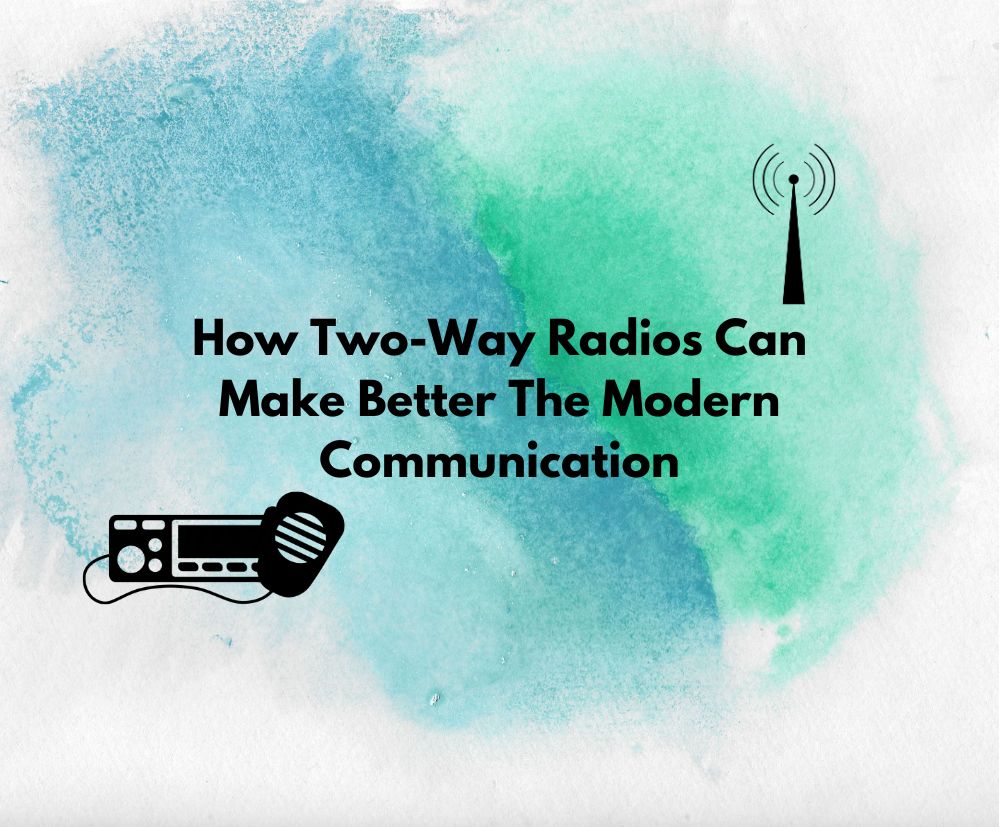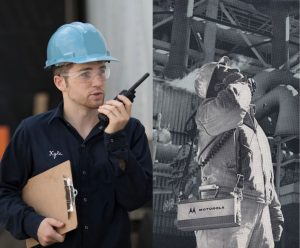
Two-way radios have been a reliable means of communication across various industries, including public safety, military, and industrial settings, for several decades.
However, with the advent of AI-powered two-way radios, the potential benefits are immense. AI can improve coordination, response times, and communication efficiency, leading to increased productivity and enhanced safety. However, it is crucial to note that deploying AI also carries risks, such as cyber-attacks, privacy breaches, and AI malfunctions. To ensure safe and responsible deployment, proper regulations and standards must be in place. Therefore, it is essential to balance the benefits and risks before embracing AI-powered two-way radios in your organization.
The Role of Two-Way Radios in Modern Communication
For several decades, two-way radio systems have played a critical role in communication across various industries, including public safety, military, and industrial settings. Notably, these systems enable instant communication between team members, providing a fast and reliable means of transmitting vital information. For instance, a firefighter can call for backup, a police officer can coordinate a search or an industrial worker can report a safety hazard, all with the use of two-way radios. Indeed, in critical situations, these radios are essential in ensuring effective communication.
However, despite their many advantages, traditional two-way radio systems have limitations. One of the most significant drawbacks is coverage, as these systems can only transmit signals over a limited distance. As a result, communication can be challenging or impossible in areas with poor reception or large facilities like factories or warehouses. Additionally, audio quality can be another limitation, as traditional systems are susceptible to interference and distortion, making it difficult to hear and understand messages. Lastly, traditional two-way radio systems have limited data processing capabilities, making it challenging to send and receive non-verbal information.
The Advantages of Integrating AI into Two-Way Radios
Furthermore, integrating AI into two-way radio systems can offer several other benefits beyond improved communication. For instance, AI-powered radios can be used to monitor and analyze environmental conditions, such as temperature, humidity, and air quality, in real-time. This data can then use to inform decision-making, optimize resource allocation, and improve safety in a variety of settings.
Another advantage of AI-powered two-way radios is their ability to learn from user behavior and adapt to individual communication styles. This can be particularly useful in high-stress situations, where communication errors can have severe consequences.
Moreover, AI-powered two-way radio systems can facilitate remote collaboration and enable seamless communication between multiple parties, regardless of their location. This can be particularly useful in industries such as healthcare, where remote consultations and diagnosis can be perform using video and audio transmission through two-way radios. In addition, AI can help to ensure that the privacy and security of sensitive communication data are maintain by implementing robust encryption and authentication mechanisms.
The integration of AI into two-way radio systems has the potential to revolutionize communication systems by enhancing speed, accuracy, reliability, and data processing capabilities. As technology continues to evolve, the possibilities for the modernization of communication systems are exciting, and AI is poised to play a significant role in this transformation.
In summary, integrating AI into two-way radio systems can offer a wide range of benefits, including improved communication, real-time data analysis, remote collaboration, enhanced privacy and security, faster emergency response times, and improved user experience.
The Modernization of Two-Way Radios in Communication
Moreover, the integration of AI into two-way radio systems has the potential to overcome these limitations. Specifically, AI can enhance the speed, accuracy, and reliability of communication. By using AI-powered speech recognition and natural language processing (NLP) algorithms, voice commands and message transcriptions become more efficient and less prone to errors. Additionally, AI can help identify and prioritize critical messages, ensuring that the most urgent ones are attend to first.
Furthermore, AI can help overcome the coverage limitation by using advanced radio frequencies and signal processing techniques. This ensures that signals are transmit over longer distances and in areas with poor reception, making communication more accessible and efficient. One of the most significant advantages of AI-powered two-way radio systems is their ability to process and transmit data, such as images, videos, and sensor readings.
For example, firefighters can use two-way radios equipped with thermal imaging sensors to locate people trapped in burning buildings. Moreover, industrial workers can use two-way radios to monitor equipment performance and detect potential malfunctions, allowing them to take corrective action before a breakdown occurs. As a result, AI-powered two-way radio communication systems have the potential to revolutionize communication in various industries, enabling better safety, security, and productivity.
However, with these benefits come potential risks, and it is crucial to consider them when deploying AI-powered two-way radio systems. One of the most significant risks is AI malfunctioning, which can lead to errors in communication or even system failure. Additionally, cyber-attacks and privacy breaches can compromise the security and confidentiality of communication. Thus, it is essential to establish proper regulations and standards for the safe and responsible deployment of AI-powered two-way radio communication systems.
Conclusion
In conclusion, it is clear that the modernization of two-way radios in communication has come a long way since the introduction of traditional two-way radio systems. While there are still limitations to overcome, the integration of AI into two-way radio systems has opened up a completely new realm of possibilities for communication systems.
The benefits of AI-powered two-way radio systems cannot be overstated. These systems can significantly enhance communication speed, accuracy, and reliability, providing better coordination and faster response times.
Thanks for reading! If you found this post informative and want to learn more about Two-Way Radios communications for remote operations, let’s connect on LinkedIn. We would be happy to answer any questions you have and discuss how we can help your business stay connected no matter where you operate.
Critical Communications
Dispatchers
Passive Components
Emergency & Crisis Response
Wireless Broadband
Satellite Communications
Unmanned aerial vehicle
Surveillance & ACC
Power Solutions
AR Products
Entreprise Products

